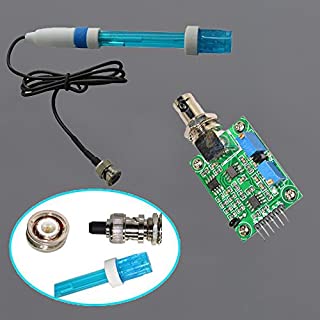
A pH sensor is a critical piece of equipment when it comes to evaluating the pH of water. This sensor can detect the quantity of alkaline and acid in water and other liquids. pH sensors may assure both the safety and quality of the products and the activities in a wastewater or manufacturing facility.
In most applications, the standard pH scale is represented by a number ranging from 0 to 14. When a material has a pH of seven, it is said to be neutral. Chemicals with a pH value greater than seven are thought to be more alkaline, while substances with a pH value of less than seven are considered more acidic.
Different pH sensor are designed for particular uses that you should be completely aware of before choosing one of these sensors.
Different Types of pH Sensors
A pH sensor, regardless of its purpose, will help you to retain pH levels at the optimal level for the procedure. This might range from powerful acids to caustics. There are several various types of pH sensors available for your liquid control and monitoring, including the following:
Combination pH sensor
It incorporates a reference electrode as well as a measuring electrode. The reference electrode is utilised to generate a steady signal, whilst the monitoring electrode is used to identify any variations in pH value.
Process pH sensors
They are constructed from combination sensors but housed in large, sturdy bodies with a flow connection for constant pH monitoring.
Laboratory Sensors
It is possible to construct it using combination sensors housed inside plastic bodies and 12mm glass. These sensors are intended for less demanding applications such as environmental sampling and pool monitoring.
Differential Sensors
They are made up of three different electrodes, with the third serving as a metal ground electrode. These sensors are notable for their ability to prevent reference fouling.
Different pH sensors are designed for certain uses, which you should be completely aware of before choosing one of these sensors.
pH Sensors for Quality Water
A pH sensor measures the acidity or alkalinity of water with a value ranging from 0 to 14. When the pH falls below seven, the water becomes more acidic. Any value greater than seven indicates that the body is more alkaline. Every sort of pH sensor measures water purity differently. The pH of water may assist in determining its quality. Measuring pH may also reveal pipe corrosion, sediments buildup, and other undesirable results of an industrial operation.
Combination pH Sensors
A combined pH sensor is the most extensively used sensor available, owing to its ability to serve as the foundation for developing laboratory sensors and processing sensors. This electrochemical sensor is equipped with a reference electrode and a measuring electrode. Whereas the reference electrode concentrates on keeping the signal constant while recording the pH level, the measuring electrodes detect any recent changes in the pH level.
Differential pH Sensors
Differential pH sensors function somewhat differently from combination pH sensors, considering they have three electrodes. While the first two electrodes are identical to those found in combined sensors, the third is a metal ground electrode that may be particularly useful in preventing reference fouling. For its third electrode, this sort of sensor is called heavy-duty.
Laboratory pH Sensors
Laboratory pH sensors use combined pH sensor technology but are encased in plastic bodies and 12mm glass. These tiny sensors are ideal for light applications such as research and teaching, pool monitoring, and environmental sampling. The sensors are pretty versatile. If you’re looking for a lab sensor, the connections, cables, and sensor fill may be changed to meet the specific application requirements.
Process pH Sensors
In more extensive and more robust bodies, employ combined sensor technologies. Its sensors are also equipped with a process connection, perfect for monitoring your water’s pH levels. Due to their excellent endurance, these sensors may be installed in a tank or directly fitted into a pipe. Whether you want to use a sensor for industrial source water, process water, or wastewater monitoring, the three process sensor categories are moderate sensors, moderate to heavy-duty sensors, and heavy-duty/coating sensors with a flat bulb glass, which many consider a self-cleaning design.
Conclusion
Maintaining the amount of water and continually checking pH levels will help you save money. However, to acquire the most excellent water quality, you must utilise multiple pH sensor. The employment of the third electrode in differential sensors, in particular, makes this sensor ideal for several industrial applications like wet scrubbers.
Knowing the distinctions between the different pH sensors might benefit your business. If you need to monitor pH levels in a tank or pipe continuously, an industrial sensor is preferable to a lightweight lab sensor.

